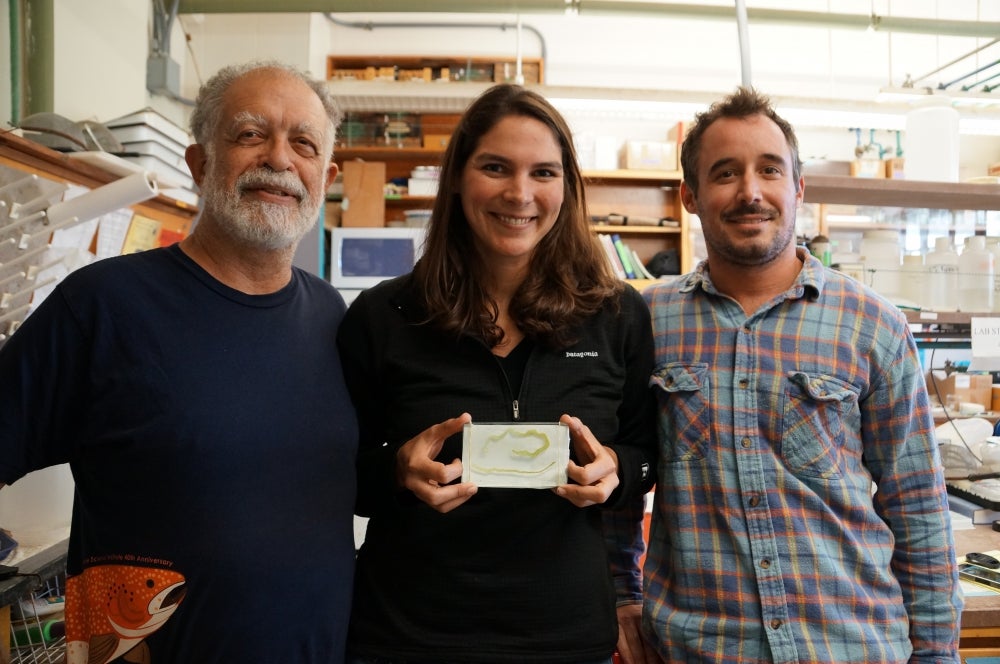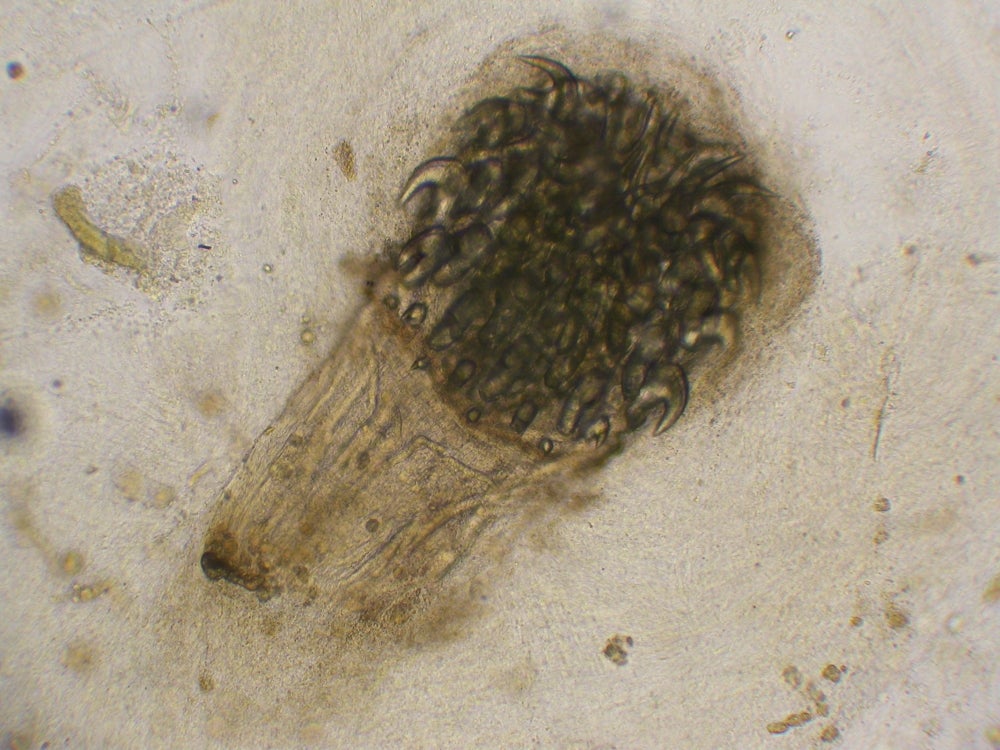Dissection of Oarfish Reveals Insights into its Ecology



Dissecting a small sampling of tissue from an 18-foot oarfish late last week, UC Santa Barbara parasitologists discovered the elusive California sea monster hosted its own little monsters inside.
"Our findings say that these are actually majorly parasitized fish," said Armand Kuris, professor of zoology in the UCSB Department of Ecology, Evolution and Marine Biology, of the late night dissection last Thursday. The oarfish carcass was found on October 13 by a Catalina Island snorkeler. Because the oarfish lives in such deep, dark and mysterious waters, and doesn't take bait, said Kuris, the creature is a rare find, especially for parasitologists.
"Oarfish wash ashore, one every few years," said Kuris, adding that finding such a fish that hasn't rotted or been eaten by other organisms, and is found in a place where scientists can get a hold of the carcass is "the result of many uncommon events." There are only two papers on oarfish parasites, he said.
Also known as the "king of herrings," and "ribbonfish," the oarfish (Regalecus glesne) is thought to be the world's largest bony fish, reaching over 30 feet long, giving rise to its sea serpent reputation. However, because it lives in deep waters (from 650-1000 feet), relatively little is known about the creature.
With the help of UCSB research biologist and ichthyologist Milton Love, the group was able to obtain a small sample of tissues –– gills, intestine, stomach, spleen and gallbladder –– for dissection. The results of their examination not only revealed more parasites than previously documented, but also clues into the ecology and habitat of the deep-water fish.
"In this little piece of intestine that we had, we found quite a few of these rather large larval tapeworms. One of them was about 15 cm (6 inches) long," said Kuris. They found a couple dozen specimens of two species in the small segment, along with two juvenile roundworms. And, unexpectedly, grad student Sara Weinstein found the hooked proboscis of an adult spiny-headed worm embedded in the intestine as well.
The life cycle stage in which these parasites were found is important, explained Kuris, because such parasites live out their life cycles in different hosts. The larval tapeworms, which hadn't yet developed their telltale segments, for instance, will stay in their larval stage indefinitely until the oarfish gets eaten by a shark, whereupon they resume their maturation inside the shark. The spiny-headed worm, on the other hand, was an adult, indicating that the oarfish ate the organism –– probably krill or some deep-water crustacean –– that hosted its juvenile form.
"These (findings) tell you about what the natural enemies of the oarfish are," said Kuris. The species it feeds on also indicate where the elusive oarfish is likely to live or hunt for food.
The next step for the researchers is to send parasite specimens away for further identification, and possibly even molecular analysis of the DNA. Despite the fact that they had only a small portion of the total fish, the researchers were able to come away with a huge amount of information.
"This thing had all sorts of stuff in it, even when we had almost no actual tissue to work with," Kuris said.
The dissection was also performed by researcher Ryan Hechinger, grad students John McLaughlin and Alejandra Jaramillo, and undergraduates Maggie Espinoza, Gabriella Dunn and technician Jake Ashford.



